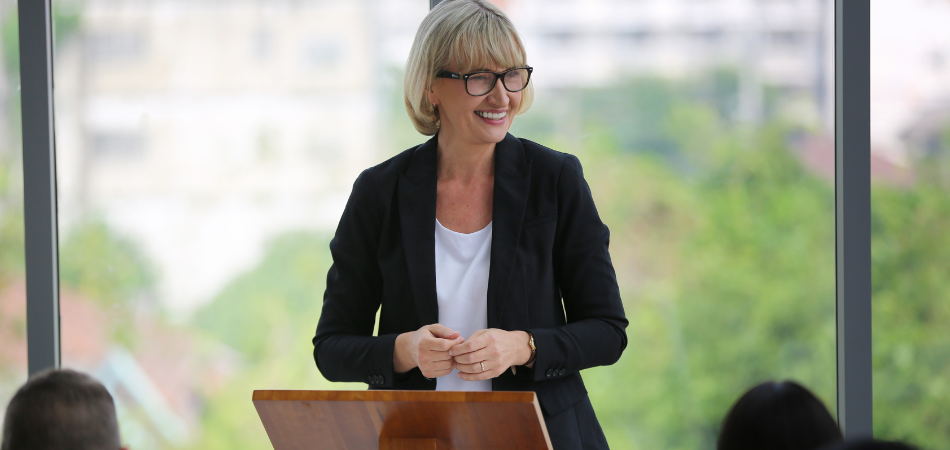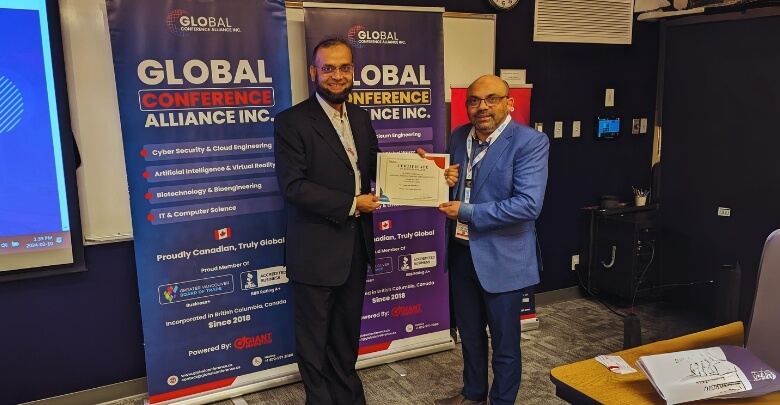Have you ever attended a conference where the speaker’s presentation lacked clarity, organization, or audience engagement? Such experiences can be frustrating and unproductive, leaving attendees dissatisfied and unfulfilled.
Like any form of public speaking, conference presentations require careful preparation and planning to achieve their objectives. Preparing a conference presentation can be daunting, but with the right approach, anyone can master the art of public speaking and deliver a successful presentation. So, how to prepare a conference presentation?
To prepare a conference presentation, you have to identify your key message, create a clear structure, develop engaging content, practice your delivery, and use visual aids effectively to support your presentation.
This article provides practical guidance on preparing a conference presentation that is clear, engaging, and achieves its intended objectives.
Key Takeaways:
- Defining clear objectives and identifying the target audience is crucial in conference presentation preparation.
- Planning and organizing content, structuring information efficiently, and incorporating visual aids and storytelling techniques are important for an effective presentation.
- Time management is crucial to deliver within the allotted time frame and avoid disrupting the conference schedule.
- Celebrating successes and reflecting on areas for improvement can motivate to continue working hard and achieving more.
Define Your Objectives and Audience
To effectively prepare for a conference presentation, establish clear objectives and identify the target audience. Defining your objectives will help you focus on what you want to achieve with your presentation. This includes determining the purpose of your presentation and what you want to communicate to your audience.
When attending a conference globally, you’ll need to initially identify your target audience to customize your presentation according to their interests and needs. Communication strategies and message delivery become more effective when you comprehend your audience.
Effective communication and message delivery are crucial to a successful conference presentation. Knowing your target audience and clearly defining your goals will enable you to organize and structure your content accordingly.
By doing so, you will be able to deliver a presentation that is both informative and engaging. Therefore, plan and organize your content in a way that is easily understood and relatable to your target audience.
Plan and Organize Your Content
Efficiently structuring the information conveyed is essential to ensuring a coherent and engaging content delivery during a conference. How you organize your content can significantly impact how the audience perceives and retains the information presented.
To help achieve this, consider using visual aids and storytelling techniques. Visual aids can help illustrate complex ideas and enhance the overall understanding of the topic. Storytelling can create an emotional connection with the audience and make the presentation more memorable.

In addition to visual aids and storytelling, timing, and pacing are crucial elements to consider when planning and organizing your content. The presentation should have a logical flow that follows a clear outline, which helps the audience stay engaged and follow along with the information presented. Consider the time allotted for the presentation and ensure the pacing appropriately covers all essential points.
Planning, organizing, and rehearsing your presentation can deliver an engaging and informative talk that resonates with your audience. As such, let’s delve into the next step of ensuring you deliver your presentation confidently and effectively: rehearsing your delivery.
Rehearse Your Delivery
Practicing your delivery is a crucial step in ensuring a successful presentation. Presentation techniques such as body language, tone, and pace can all impact the audience’s perception of the presented content.
Rehearsing your delivery provides an opportunity to refine and perfect these techniques, ensuring that the information is conveyed effectively to the audience. Additionally, rehearsing can help alleviate public speaking anxiety.
By practicing beforehand, speakers can feel more confident and prepared for the conference, reducing nerves and increasing their ability to deliver a successful presentation.
To effectively rehearse your delivery, consider using a three-column table. In the first column, write out the content you will be presenting. In the second column, write down any visual aids or props you will use. You can prepare a PowerPoint presentation for a conference with a good visual.
In the third column, write out notes on how you will deliver each section, including body language, tone, and pace. This table can serve as a helpful guide during rehearsals and can be used to track progress and identify areas for improvement. This technique makes speakers feel more confident and better equipped to deliver a successful presentation.
Transitioning into the subsequent section, engaging your audience is another crucial aspect of a successful presentation. Speakers can increase audience engagement and convey their message by connecting with the audience and making the content relatable.
Engage Your Audience
Engaging the audience is a critical component of delivering an effective presentation. It fosters a connection between the speaker and the listeners, resulting in increased receptiveness to the message being conveyed.
Utilizing interactive techniques such as asking questions, encouraging participation, and incorporating storytelling helps keep the audience engaged throughout the presentation.
By incorporating these methods, the speaker can create a more dynamic and interactive environment, which can help to reinforce the key points being conveyed and enhance the overall impact of the presentation.
Note that engaging the audience is not just about keeping them entertained. Instead, it is about creating a sense of involvement and investment in the presentation, which can help increase the likelihood that they will retain the presented information.
By actively engaging the audience, the speaker can also help to build trust and credibility, which can be especially important when presenting complex or technical information. Incorporating interactive techniques and storytelling methods can help create a more engaging and effective presentation that resonates with the audience and facilitates knowledge transfer.
Assess and Reflect on Your Performance
When evaluating and reflecting on your performance after a conference presentation, solicit feedback from various sources, such as colleagues or audience members. This feedback can provide valuable insights into areas where you excelled and areas that require improvement.
Identifying areas for improvement can help you enhance your future presentations while celebrating your successes can boost your confidence and motivation.
Solicit Feedback
Soliciting feedback from colleagues or peers can greatly enhance the quality and effectiveness of a conference presentation. Receiving critique from others can help identify areas for improvement and provide valuable insights into how to improve delivery.
Seek feedback from a diverse group of individuals, including those who may not be familiar with the topic or field, as they can provide a fresh perspective and highlight areas that may be unclear or confusing.
When soliciting feedback, be open-minded and receptive to constructive criticism. It can be helpful to provide specific questions or prompts for feedback, such as asking for suggestions on how to improve the organization of the presentation or how to engage the audience better.
Additionally, thank those who provide feedback and incorporate suggestions into the presentation where appropriate. By soliciting feedback and incorporating it into the presentation, one can improve the overall quality and effectiveness, ultimately leading to a more successful conference experience.
Identifying areas for improvement is a crucial step in preparing a conference presentation. By reflecting on one’s performance and soliciting feedback from others, one can gain valuable insights into improving delivery and engaging the audience.
Identify Areas for Improvement
Reflecting on one’s performance and seeking input from diverse perspectives can reveal opportunities for enhancing the delivery and efficacy of a conference presentation. One area for improvement to consider is the use of visual aids. Visual aids such as slides, graphs, or charts can enhance the audience’s understanding and retention of the presented information. However, their improper use can also distract or confuse the audience.
To improve the use of visual aids, presenters should consider the following questions: Are the visual aids necessary? Are they clear and easy to read? Are they relevant to the information being presented? Are they distracting from the presenter’s message?
Another area for improvement is time management. Presenters should aim to deliver their presentation within the allotted time frame, allowing for time for questions and discussion. Going over time can not only disrupt the conference schedule, but can also diminish the audience’s interest and attention.
To improve time management, presenters should practice their presentation within the allotted time frame, allowing for possible interruptions or technical difficulties. Additionally, presenters can utilize time-tracking tools or have a colleague keep time during the presentation.
By identifying areas for improvement such as these, presenters can enhance their conference presentation delivery and efficacy. Reflecting on one’s performance and seeking input from diverse perspectives can lead to identifying areas for improvement in visual aids and time management. By addressing these areas, presenters can enhance the delivery and efficacy of a conference presentation.
Celebrate Your Successes
Recognizing and acknowledging one’s successes is crucial in any academic journey. It not only boosts morale but it also promotes continued success. When preparing for a conference presentation, celebrate your successes. This recognition strategy can motivate you to continue working hard and to achieve more in the future.
Here are three motivation techniques that can help you celebrate your successes when preparing for a conference presentation:
- Reflect on Your Accomplishments: Take a moment to reflect on your past achievements. This reflection can help you appreciate your hard work to get where you are today.
- Share Your Successes with Others: Share your successes with your colleagues, friends, and family. This can motivate you and inspire others to work hard toward their goals.
- Treat Yourself: Rewarding yourself for your achievements can motivate you. Whether buying yourself a treat or taking a break, it can help you feel proud of your accomplishments and energize you for future successes.
Conclusion
Preparing a conference presentation requires a thorough understanding of the objectives and audience, effective planning and organization of content, rehearsal of delivery, engaging the audience, and reflective evaluation of performance.
Consider the key takeaways that the audience should gain from the presentation and tailor the content accordingly. The preparation process should include a clear structure, relevant visuals, and a confident delivery that captivates the audience.
Presenting at a conference is like being an orchestra conductor, where each element must work harmoniously to create a memorable experience for the audience. The presenter must be the leader who guides the audience through the content, engaging them with enthusiasm and confidence.






